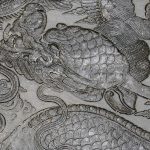Mountains and markets
With three-quarters of its area covered in steep hills, Tua Chua is likened to a sleeping beauty in the mountains of Northwestern Vietnam. A difficult three-hour drive from Dien Bien town, Tua Chua offers pristine scenery, a fresh climate, and sincere people. Among the 19 ethnic groups residing in Dien Bien province, people of seven different ethnicities live in Tua Chua, which is home to the largest Mong population in the province with Mong Xanh, Mong Do and Mong Trang people.

Bordering Sin Ho district of Lai Chau province to the north, Tuan Giao district and Muong Cha district of Dien Bien province to the south and west respectively, and Quynh Nhai district of Son La province to the east, Tua Chua stands out as a place where many cultural identities remain pure and authentic. One can witness the local culture in Tua Chua’s markets. Some 15km from Tua Chua town, the Xa Nhe Market is held every six days on Rooster Day and Cat Day of the Chinese zodiac calendar. This market draws Mong, Dao, Thai, and Xa Phang people from neighboring communes like Xa Nhe, Muong Dun, Tua Thang, and Muong Bang, who come to gather and exchange agricultural products, tools, traditional clothing, etc.

Meanwhile, the market in Ta Sin Thang commune is one of the oldest in the region, held every six days on Horse Day and Rat Day, 42km from Tua Chua town amidst the misty mountains. This market draws people who are dating and searching for life partners. During the day, everyone seems relaxed amidst the khene music, folk songs, and aroma of Mong Pe corn wine. On weekend nights, the Tua Chua Night Market draws local vendors selling products like wood ear mushrooms, fragrant mushrooms, honey, rose apples, dried bamboo shoots, herbs, and rustic dishes. Lively folk performances by locals add to the atmosphere and create a warm, friendly vibe that welcomes visitors to Tua Chua.

Known for its cultural tourism and scenic spots, Tua Chua also offers terraced rice fields and unique caves. The rice ripens here in September-October annually. The terraced fields are layered, tiered, and shaped like a maze in some places, while thatched houses dot the hills, linked by small, winding paths. Scenes of ripe golden rice fields are iconic in the Northwest region and support the livelihoods of local ethnic minority communities. Compared to familiar names like Mu Cang Chai (Yen Bai) or Hoang Su Phi (Ha Giang), Tua Chua is equally impressive. The beautiful and fertile rice fields of Chieu Tinh, Hang La, Hang Khua and Rua Hill nestle in the heart of a vast valley that spans the three communes of Sinh Phinh, Ta Phin, and Trung Thu.

The hands of Dien Bien’s people have sculpted beautiful rice terraces, while nature has bestowed wondrous caves deemed national scenic spots onto this region such as Kho Chua La Cave, Xa Nhe Cave in Muong Dung commune, Pe Rang Ky Cave which has three chambers nestled in a primeval forest in the limestone mountains of Huoi So commune. It houses diverse stalactites and stalagmites that glisten like sculptures in an art museum.





